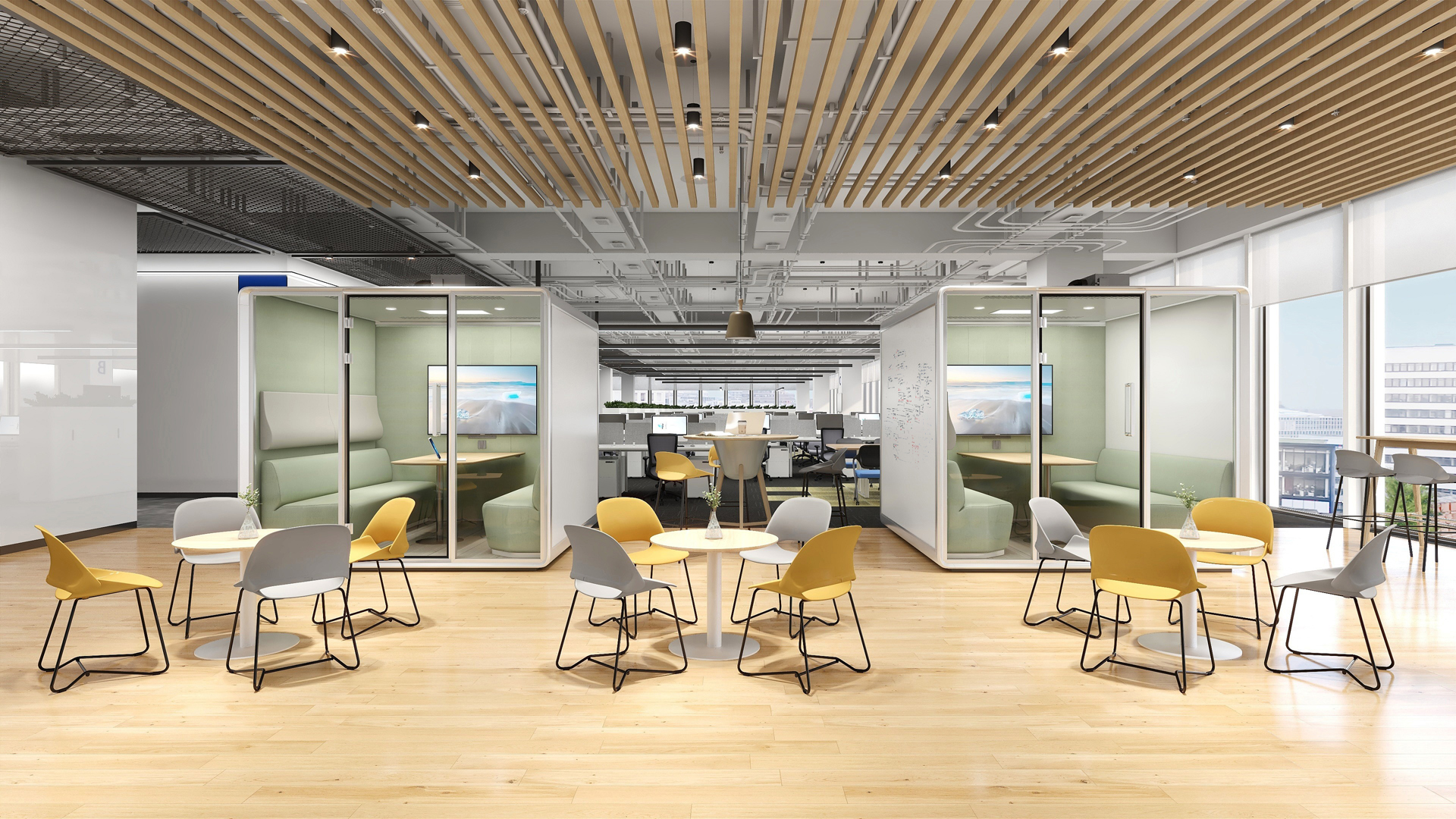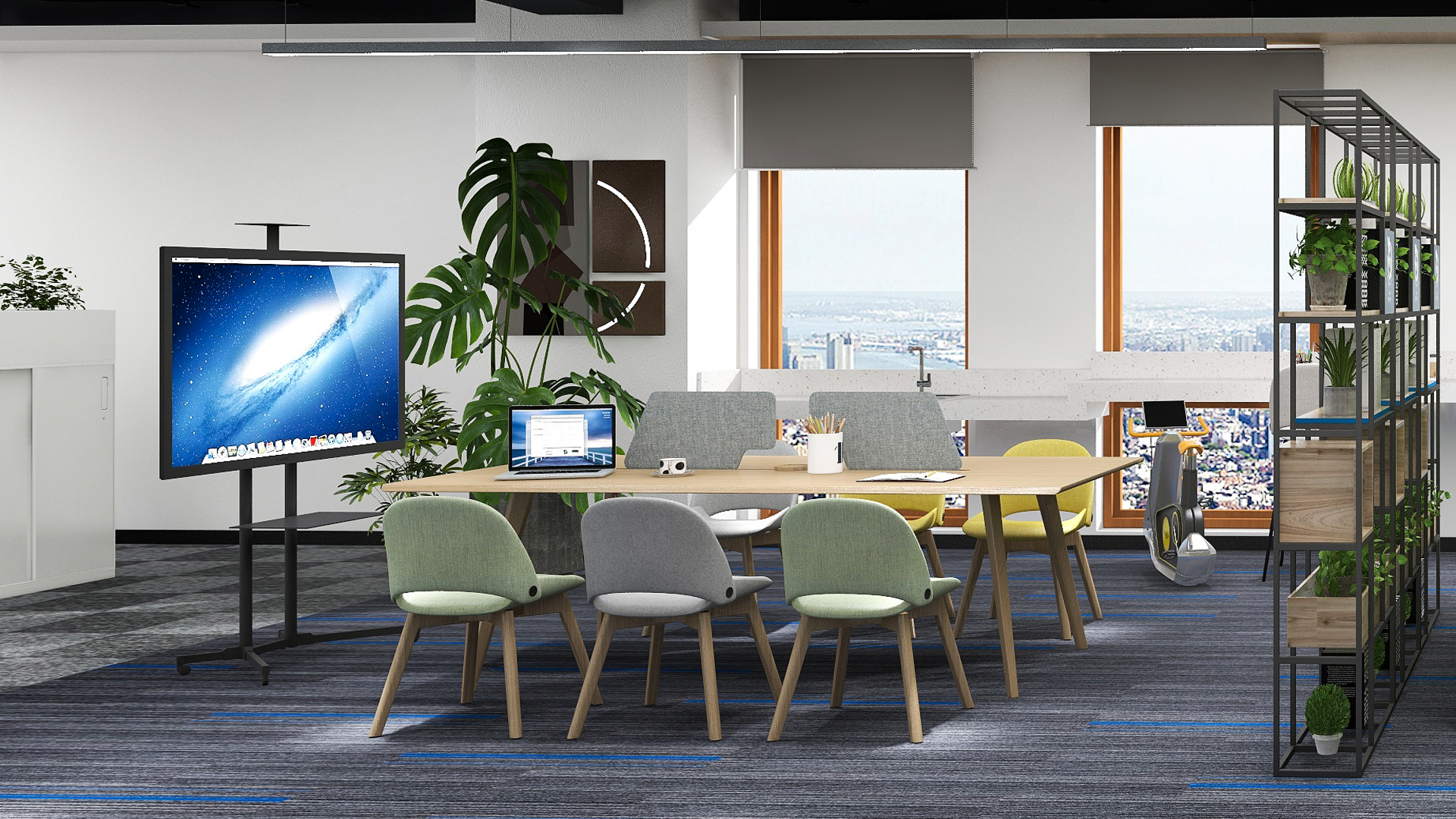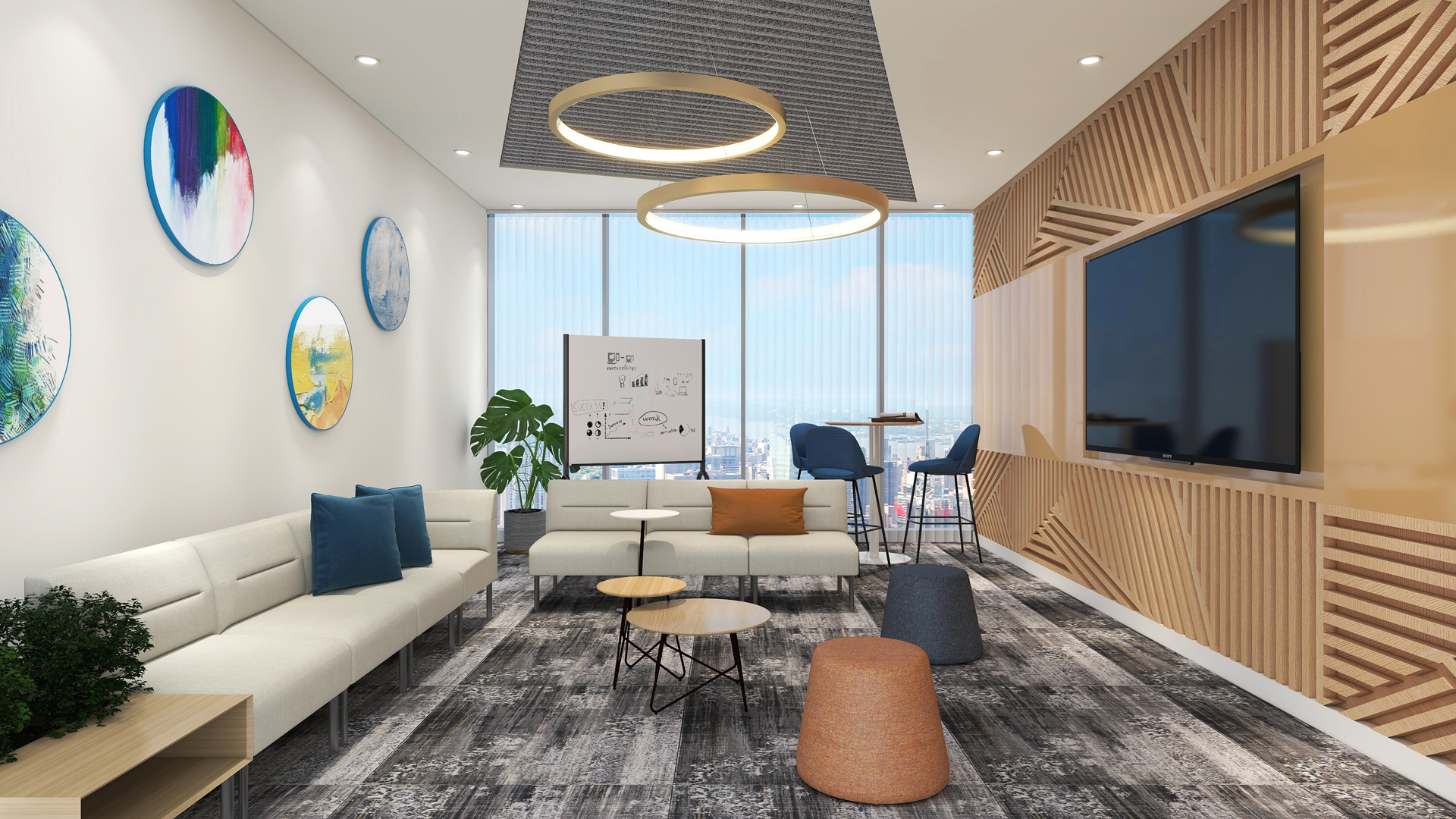
The way we work has changed and the collaborative meeting spaces have to change as well.
A diverse range of full-time in-office, part-time remote, and full-time remote personnel can be found in the new hybrid workplace. Addressing meeting rooms are a crucial component of meeting the needs of today's workers, and our workplaces are being challenged to adapt to their new demands.

Why a shift in meeting/collaboration space design is required?
Workers are asking this question more frequently as they have more control over where their work gets done: "Could this meeting have been an email?" Well-planned meeting space can make it simpler to say "no" to that response. The age-old question, "why are we meeting?" will be clarified with the help of different spaces, several new seating options, designated project rooms, and greener locations.
To accommodate the needs of globally scattered workforces, meeting room design must change. To promote hybrid work, collaborative spaces bridge the gap between the physical and digital worlds, enabling in-person and distant peers to interact, meet, brainstorm, discuss, and participate in other ways.
FASTT – Five Elements for successful collaborative spaces
Furniture, Ambiance, Suitability, and Technology & Tools: The five factors you should bear in mind while designing efficient and successful meeting spaces for your office are outlined below.
Furniture
Meetings can last for a long time and in a bad chair, it seems to be longer. Because of this, the type of furniture chosen and its placement are essential components in enhancing the entire experience for office workers. The arrangement of the furniture and chairs should accommodate the size of the room or space and enhance everyone's ability to see.
Tables with rounded or tapered edges can let the camera see more people. Ergonomic chairs can help people feel relaxed even in long meetings. Comfortable lounge chairs or standing tables can encourage team brainstorming in settings with smaller spaces or in informal meeting places.

Ambiance
The ambiance of the meeting space has a considerable effect on the moods and the experience of the people. Lighting, colors, sound, and touch create the overall vibe of a space.
The best lighting for videoconferencing is natural, diffused light; avoid using strong lighting wherever possible. For video meetings, a neutral background like grey color offers the ideal setting. Place as many sound-absorbing materials as you can in the space to enhance audio quality for both physical and virtual guests. Finding ways to include living things into conference rooms is becoming a priority since confined areas may benefit the most from their inclusion of plants.
Suitability
For mixed workforces, the one-size-fits-all conference room is insufficient. The first question to ask is “What kind of meetings will the rooms primarily support?” In accordance with the needs of the team and their size, hybrid spaces must be built to support a range of interactions and activities.
The relationship between room function and room size is crucial to ensuring effective use of all available meeting spaces. If the majority of attendees will be teleconferencing, your meeting spaces should be designed differently. To enable meetings with an average of only 3-5 in-person attendees, your company may benefit from having fewer large conference rooms and more huddle rooms.
Tools
Analog tools are required in hybrid meeting spaces as well. Think about providing spaces with practical and collaboration tools to assist attendees at meetings as they communicate with their remote peers. Magnetic and portable whiteboards are useful for brainstorming sessions and team discussions.

Technology
If a hybrid collaborative space isn’t equipped the right technology, then it is not going to work for hybrid teams at all. And nothing ruins a meeting faster than poor audio. Poor video quality, inadequate power access, device sharing issues, tech glitches, and more…hybrid work comes with its own set of problems.
Consider using two flat panel screens, one to display meeting content and the other to show virtual attendees. Select a suitable camera and put it according to the activity taking place in the space. In order for virtual participants to hear every in-person attendee well, the space should be covered with microphones. The correct microphone for the environment may improve speech while lowering noise. All participants should have easy access to power while on site. Consider hardware that smoothly connects with your software platform and tools to connect shared devices.